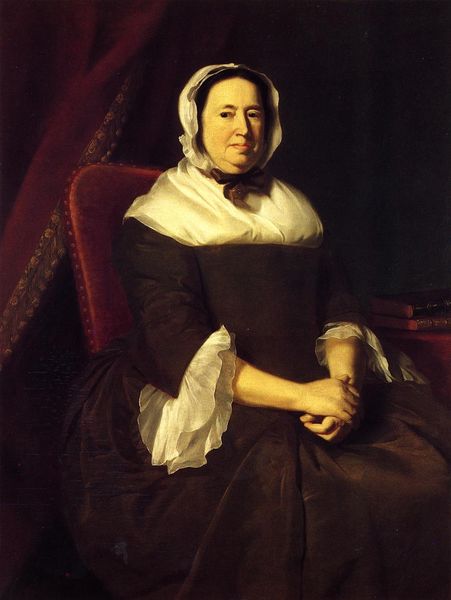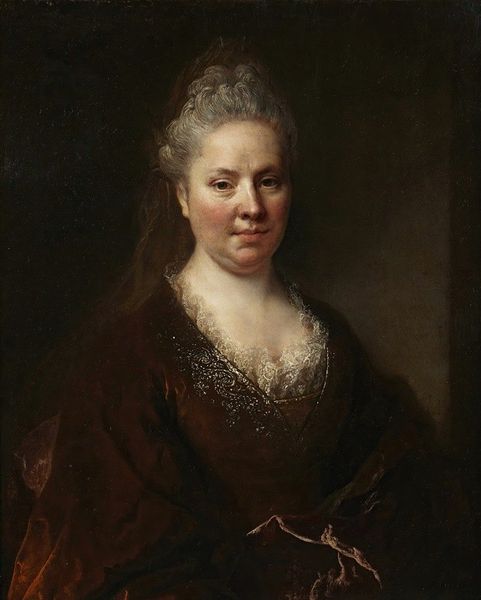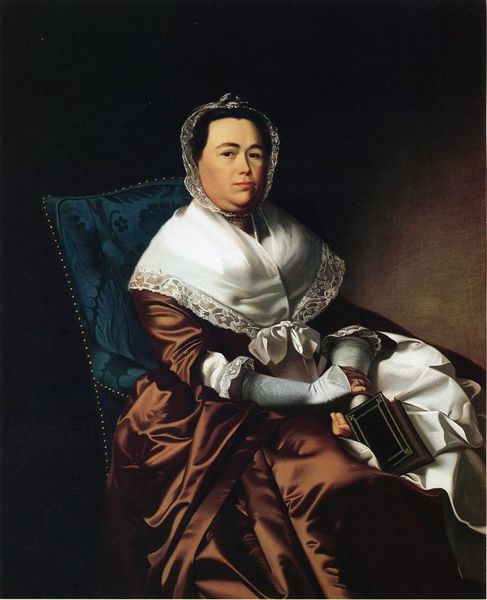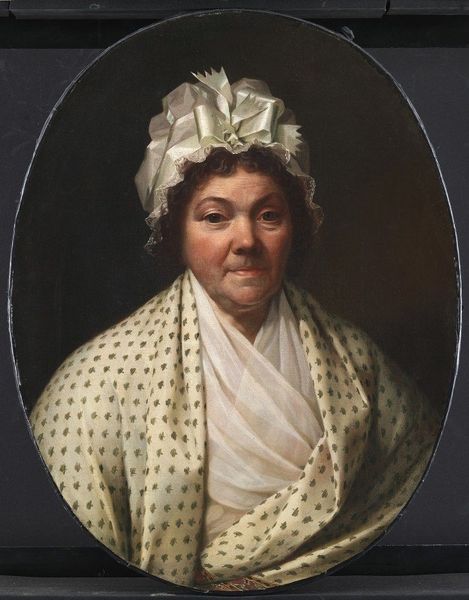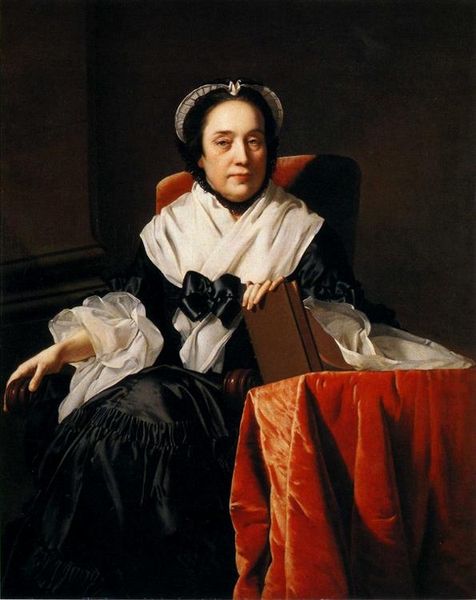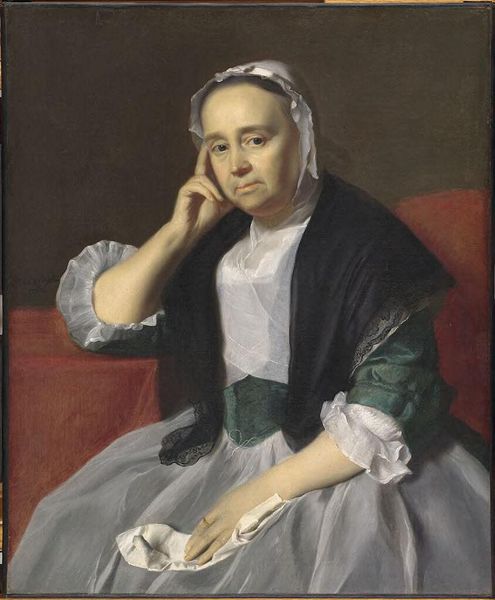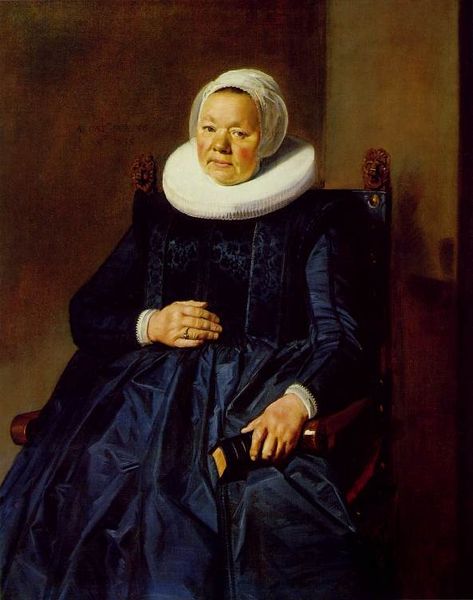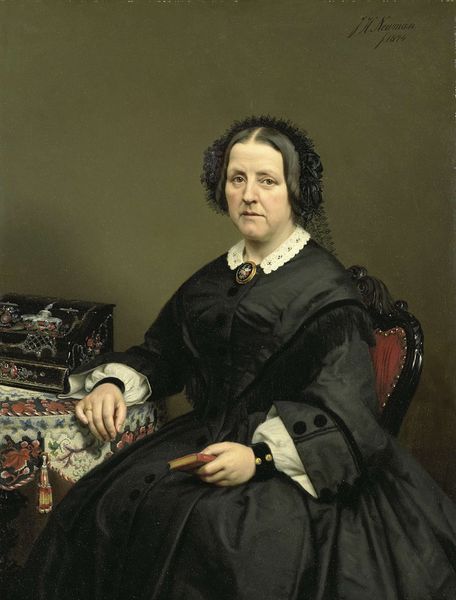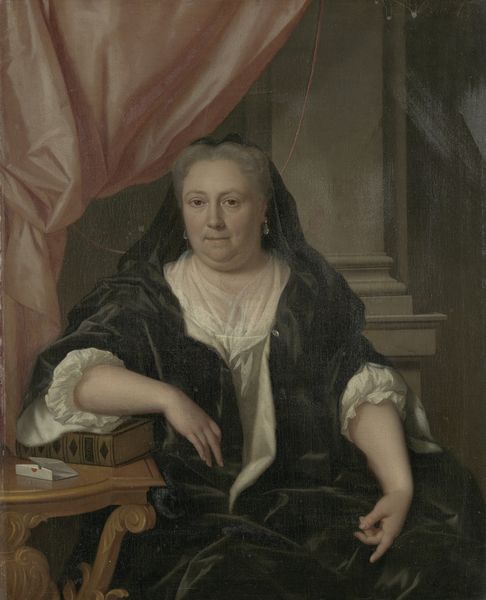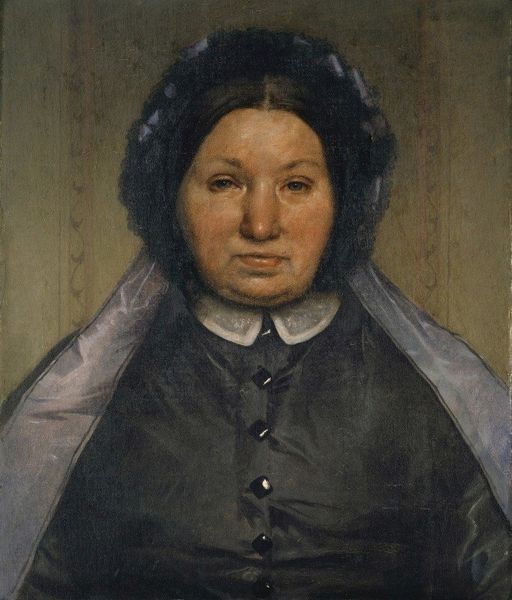
Dimensions: 100.33 x 127 cm
Copyright: Public domain
Curator: John Singleton Copley painted this oil portrait, "Portrait of Mrs. Paul Richard," in 1771. Editor: The first thing that strikes me is the contrast in textures. The dull matte fabric of her dress clashes so strongly with her elaborate lace collar. Curator: Yes, the textures are indeed noteworthy, and such attire signaled status and propriety within Boston's merchant class during that era. Note the sober, dark tones typical of puritan portraiture; but consider too, her gaze directed confidently outward at the viewer. Copley masterfully renders the material trappings, sure, but seeks too to capture her personality and station. Editor: Well, but what's implied in the materials? That simple cap, compared to that extravagant lace scarf… It speaks of restrained affluence and contrasts sharply to the gaudy displays of the European aristocracy. It’s like, “We’ve money, but we aren't going to flaunt it like that lot over the ocean." I see that tension. Curator: Absolutely. She is situated right on the cusp between two worlds - traditional austerity versus an emerging worldliness fueled by commerce. Also observe the detail: her linen is rendered impeccably, while the almost invisible brushstrokes show her skin's texture and age. It's less about pure physical beauty and more about representing moral authority. Editor: This must have taken time and significant artistic skill with such dense oils and glazes to produce a believable texture like that of the skirt! She may not flaunt extreme wealth in terms of adornment, but her garments, especially the dress, signal an economic ease to command fine goods produced from raw materials that had to be sourced, worked, and skillfully created in complex commodity supply chains. That kind of painting involved specialized, highly trained artistic labor and expensive pigment too! Curator: Yes, Copley was extraordinarily skillful and, from this perspective, also extraordinarily adept at conveying complex social messages. You read this sitter through the material traces of labour but for me she is a conduit for greater insights. What remains from this work now resides less in materiality and more in shared memory and what such memories can elicit and reveal. Editor: A fair point. Considering everything, I see a portrait that reveals a world shifting under its feet; an artist testing and expressing the sinews between labor and legacy.
Comments
No comments
Be the first to comment and join the conversation on the ultimate creative platform.
